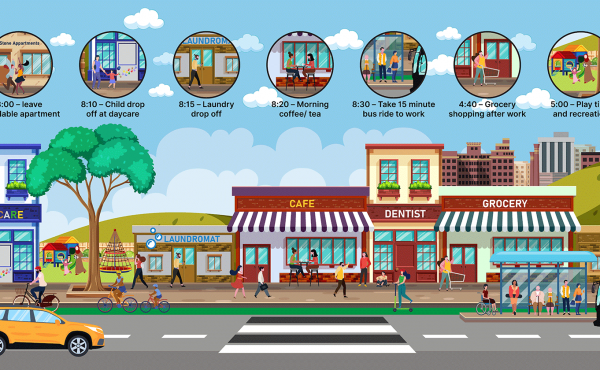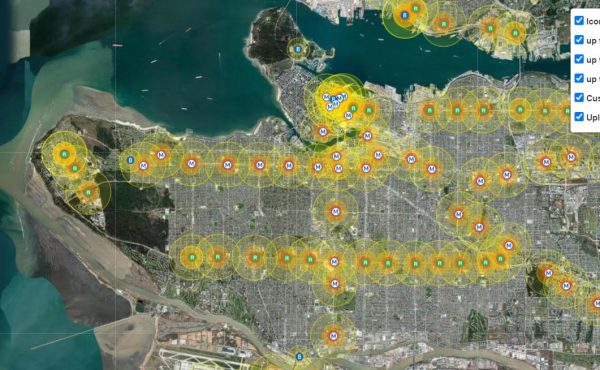
“To Jane Jacob’s three traditional urban values of civic space, human scale and diversity, the current environmental imperative adds two more: conservation and regionalism.” -Peter Calthorpe
Peter Calthorpe (Island Press, 2011)
Reviewed by Laura Kozak
With a methodology that is both academic and practical, Berkley scholar and designer Peter Calthorpe, a founder of the Congress for New Urbanism, establishes a powerful argument for the future of cities, citing transportation and urban design as the most significant opportunities for simultaneously improving quality of life and reducing carbon emissions. Calthorpe provides a big-picture snapshot of current and projected trends in global and American fuel consumption, carbon emissions and land use, with a tone that is decidedly absent of a dooms-day inevitability. Instead, we are offered an optimistic championing of urbanism; principles that harken back to the urban planning of pre-automobile America, with the added benefit of 21st century technology. The book also articulates a 21st century imperative: the world is urbanizing, and the organization of cities will be a key tool in addressing climate change.
Urbanism in the Age of Climate Change takes an interdisciplinary though non-holistic approach, both in its exploration of the problems cities face, and in its offering of solutions. Prioritizing quantitative analysis – that is, statistics and studies that look at the spatial organization of the city, measurable performance aspects and human statistics – Urbanism does not take an in-depth look at economics or socio-political factors, or their impact on the conditions of urban life. That said, Calthorpe strikes a good balance between the general and the specific: there is enough detail here to be of practical value to a planner, politician, architect or transportation engineer, while allowing anyone in those fields to see beyond a myopic, single-discipline approach. More importantly, the book lays the groundwork for us all to believe in cities, and to investigate the urban forms that contribute to the lifestyles we want for the future.
With a focus on urbanism in America, and particularly in California, Calthorpe thoroughly establishes the important link between transportation and land use. Vision California, a tool co-developed by the California High Speed Rail Authority and the state’s Strategic Growth Council, is commended for its flexibility and ease-of-use in analyzing alternate projected scenarios of land use and transportations. More importantly, this initiative demonstrates the need to take a whole-systems approach to urbanism, as well as the dramatic possibilities of collaboration between fields.
Detailed and well-researched, Urbanism in the Age of Climate Change is a dense read. Unbroken prose makes this book tough to use as a reference tool, although a comprehensive index does help. An increased use of images and diagrams would vastly improve the content of this book; the graphics included here are clunky and unhelpful, and do not augment or help the reader to navigate the text.
With this in mind, however, Urbanism in the Age of Climate Change builds on the core principles of New Urbanism, rigorously subjecting them to investigation through the lens of environmental performance. A pioneering text in its interdisciplinary, systems-approach to urban design, it will help lead the way for policy-makers, designers and urban inhabitants alike.
***
Laura Kozak is a designer, cartographer and curator. She is pursuing collaborative design of the urban environment through the Advanced Studies in Architecture program at the University of British Columbia. She is a curator at the Wee Gallery and 221A Artist Run Centre and a regular contributor to re:place magazine. In 2011, she is curating Design in the Field and teaching Urban Cartography at Emily Carr University of Art + Design.



